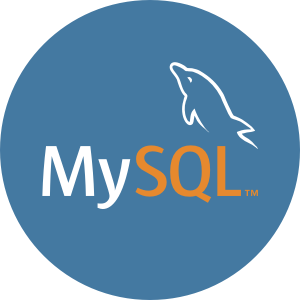MySQL vs VictoriaMetrics
A detailed comparison
Compare MySQL and VictoriaMetrics for time series and OLAP workloads
Learn About Time Series DatabasesChoosing the right database is a critical choice when building any software application. All databases have different strengths and weaknesses when it comes to performance, so deciding which database has the most benefits and the most minor downsides for your specific use case and data model is an important decision. Below you will find an overview of the key concepts, architecture, features, use cases, and pricing models of MySQL and VictoriaMetrics so you can quickly see how they compare against each other.
The primary purpose of this article is to compare how MySQL and VictoriaMetrics perform for workloads involving time series data, not for all possible use cases. Time series data typically presents a unique challenge in terms of database performance. This is due to the high volume of data being written and the query patterns to access that data. This article doesn’t intend to make the case for which database is better; it simply provides an overview of each database so you can make an informed decision.
MySQL vs VictoriaMetrics Breakdown
 |
 |
|
| Database Model | Relational database |
Time series database |
| Architecture | MySQL uses a client-server model with a multi-layered server design. It supports the SQL query language and offers various storage engines, such as InnoDB and MyISAM, for different use cases. MySQL can be deployed on-premises, in the cloud, or as a managed service. |
VictoriaMetrics can be deployed as a single-node instance for small-scale applications or as a clustered setup for large-scale applications, offering horizontal scalability and replication. |
| License | GNU General Public License v2 (for the open-source Community Edition) |
Apache 2.0 |
| Use Cases | Web applications, e-commerce, data warehousing, content management systems, business applications |
Monitoring, observability, IoT, real-time analytics, DevOps, application performance monitoring |
| Scalability | Supports vertical scaling by adding more resources to a single node; horizontal scaling can be achieved through replication, sharding, and third-party tools |
Horizontally scalable, supports clustering and replication for high availability and performance |
MySQL Overview
MySQL is an open source relational database management system that was first released in 1995. It is one of the most popular databases worldwide due to its ease of use, reliability, and performance. MySQL is widely used for web applications, online transaction processing, and data warehousing. Oracle Corporation acquired MySQL in 2010, but it remains open source software with an active community of contributors.
VictoriaMetrics Overview
VictoriaMetrics is an open source time series database developed by the company VictoriaMetrics. The database aims to assist individuals and organizations in addressing their big data challenges by providing state-of-the-art monitoring and observability solutions. VictoriaMetrics is designed to be a fast, cost-effective, and scalable monitoring solution and time series database.
MySQL for Time Series Data
MySQL can be used for storing and analyzing time series data, but it will not be as efficient as a dedicated time series databases. MySQL’s flexibility and support for various indexing techniques can make it a suitable choice for small to medium sized time series datasets. For large-scale time series data workloads, with high write throughput or use cases where low latency queries are required, MySQL will tend to struggle unless highly customized.
VictoriaMetrics for Time Series Data
VictoriaMetrics is designed for time series data, making it a solid choice for applications that involve the storage and analysis of time-stamped data. It provides high-performance storage and retrieval capabilities, enabling efficient handling of large volumes of time series data.
MySQL Key Concepts
- Table: A collection of related data organized in rows and columns, which is the primary structure for storing data in MySQL.
- Primary Key: A unique identifier for each row in a table, used to enforce data integrity and enable efficient querying.
- Foreign Key: A column or set of columns in a table that refers to the primary key in another table, used to establish relationships between tables.
VictoriaMetrics Key Concepts
- Time Series: VictoriaMetrics stores data in the form of time series, which are sequences of data points indexed by time.
- Metric: A metric represents a specific measurement or observation that is tracked over time.
- Tag: Tags are key-value pairs associated with a time series and are used for filtering and grouping data.
- Field: Fields contain the actual data values associated with a time series.
- Query Language: VictoriaMetrics supports its own query language, which allows users to retrieve and analyze time series data based on specific criteria.
MySQL Architecture
MySQL is a relational database management system that uses SQL for defining and manipulating data. It follows the client-server model, where a MySQL server accepts connections from multiple clients and processes their queries. MySQL’s architecture includes a storage engine framework that allows users to choose from different storage engines, such as InnoDB, MyISAM, or Memory, to optimize the database for specific use cases.
VictoriaMetrics Architecture
VictoriaMetrics is available in two forms: Single-server-VictoriaMetrics and VictoriaMetrics Cluster. The Single-server-VictoriaMetrics is an all-in-one binary that is easy to use and maintain. It vertically scales well and can handle millions of metrics per second. On the other hand, VictoriaMetrics Cluster consists of components that allow for building horizontally scalable clusters, enabling high availability and scalability in demanding environments. The architecture of VictoriaMetrics enables users to choose the deployment option that best suits their needs and scale their database infrastructure as required.
Free Time-Series Database Guide
Get a comprehensive review of alternatives and critical requirements for selecting yours.
MySQL Features
ACID compliance
MySQL supports transactions and adheres to the ACID (Atomicity, Consistency, Isolation, Durability) properties, ensuring data integrity and consistency.
Scalability
MySQL can scale both vertically and horizontally, depending on the storage engine and configuration.
Replication and high availability
MySQL supports various replication techniques, including master-slave and master-master replication, to provide high availability and fault tolerance.
VictoriaMetrics Features
High performance
VictoriaMetrics is optimized for high-performance storage and retrieval of time series data. It can efficiently handle millions of metrics per second and offers fast query execution for real-time analysis.
Scalability
The architecture of VictoriaMetrics allows for both vertical and horizontal scalability, enabling users to scale their monitoring and time series database infrastructure as their data volume and demand grow.
Cost-effectiveness
VictoriaMetrics provides a cost-effective solution for managing time series data. Its efficient storage and query capabilities contribute to minimizing operational costs while maintaining high performance.
MySQL Use Cases
Web applications
MySQL is a popular choice for powering web applications, content management systems, and e-commerce platforms due to its flexibility, ease of use, and performance.
Online transaction processing (OLTP)
MySQL is suitable for OLTP systems that require high concurrency, fast response times, and support for transactions.
Data warehousing
While not specifically designed for data warehousing, MySQL can be used for small to medium-sized data warehouses, leveraging its support for indexing, partitioning, and other optimization techniques.
VictoriaMetrics Use Cases
Monitoring and Observability
VictoriaMetrics is widely used for monitoring and observability purposes, allowing organizations to collect, store, and analyze metrics and performance data from various systems and applications. It provides the necessary tools and capabilities to track and visualize key performance indicators, troubleshoot issues, and gain insights into system behavior.
IoT Data Management
VictoriaMetrics is suitable for handling large volumes of time series data generated by IoT devices. It can efficiently store and process sensor data, enabling real-time monitoring and analysis of IoT ecosystems. VictoriaMetrics allows for tracking and analyzing data from factories, manufacturing plants, satellites, and other IoT devices.
Capacity Planning
VictoriaMetrics enables retrospective analysis and forecasting of metrics for capacity planning purposes. It allows organizations to analyze historical data, identify patterns and trends, and make informed decisions about resource allocation and future capacity requirements.
MySQL Pricing Model
MySQL is available in multiple editions with different feature sets and pricing models. The MySQL Community Edition is open source and free to use, while the MySQL Enterprise Edition includes additional features, such as advanced security, monitoring, and management tools, and requires a subscription. Pricing for the Enterprise Edition depends on the number of server instances and the level of support required.
VictoriaMetrics Pricing Model
VictoriaMetrics is an open source project, which means it is available for free usage and doesn’t require any licensing fees. Users can download the binary releases, Docker images, or source code to set up and deploy VictoriaMetrics without incurring any direct costs. VictoriaMetrics also has paid offerings for on-prem Enterprise products and managed VictoriaMetrics instances.
Get started with InfluxDB for free
InfluxDB Cloud is the fastest way to start storing and analyzing your time series data.